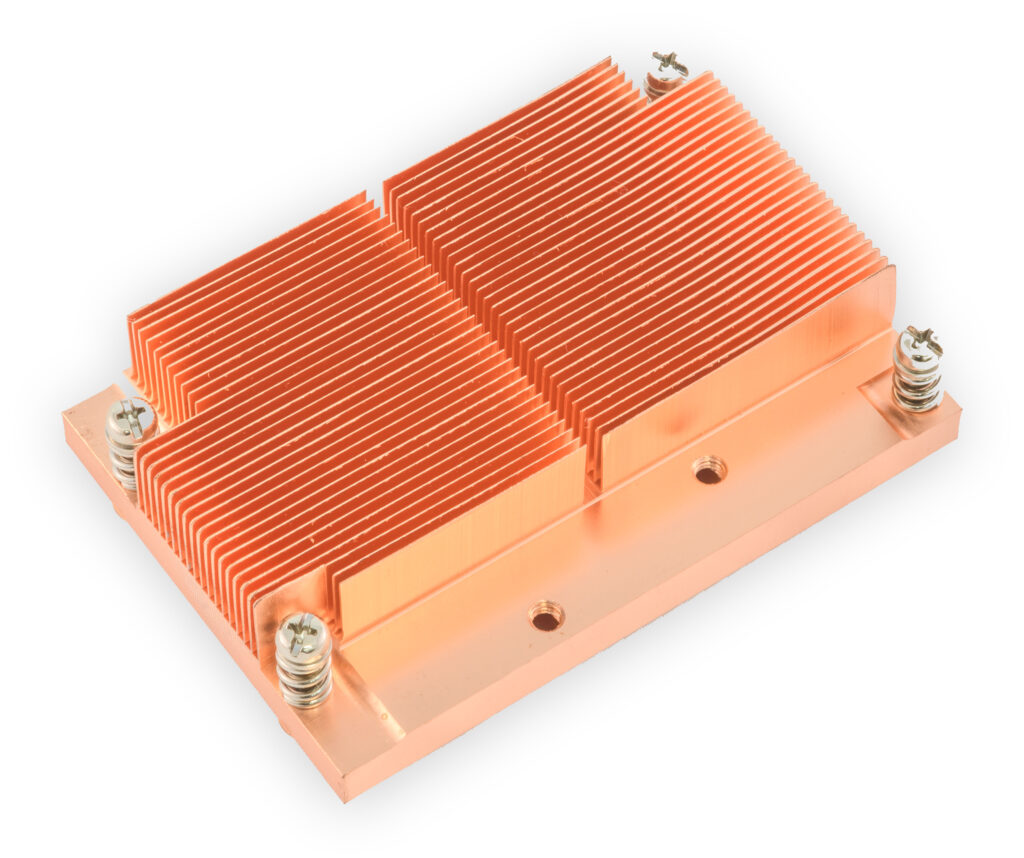Cold Plates
Direct-to-chip liquid cooling can handle higher densities than air cooling, while using almost half of the power required by server fans and computer-room air conditioners. Coolant circulates through cold plates, mounted directly to server processors, to remove heat at its source and cool data centers more efficiently.
Benefits:
- Standard cold plates, designed for major server manufacturers, make installation easy.
- Custom cold plates can be designed and delivered quickly, for all server types.
- The hybrid cold plate design uses fins for additional air cooling as a temporary backup, allowing the system to continue operating during service, testing, and upgrades.
- Using channels in the cold plate, called turbulators, mixes cooling fluid to improve heat absorption.
Turbulator Technology

Chilldyne uses turbulators, placed inside flow paths (channels) in the cold plate, to mix the coolant and increase thermal transfer. Warmer liquid on the outside of the channel is mixed with cooler liquid in the center to improve heat absorption. This also allows data center operators to fine-tune the liquid flow and set the optimal balance between heat removal and pressure required for each server.

Hybrid cold plates deliver cooling fluid direct to the chip for the best possible performance while still retaining the air cooling fins on top of the cold plate. This allows the cold plate to also serve as an air-cooling backup. If the cooling system needs to be taken off line for service, the servers can still perform on air cooling. This reducers down time and simplifies service.
Thermal Resistance vs. Flow Rate for the Skylake, Sapphire Rapids and Milan Hybrid Heat Sinks
Thermal resistance is the heat property measurement of a material's ability to transfer heat. The lower the thermal resistance, the better the material is at transferring heat. The Thermal Resistance graph shows that as the coolant flow rate increases (through the heat sink or cold plate) the thermal resistance decreases. Chilldyne cold plates are designed to have the optimal flow rate and ensure the highest level of thermal performance.
Pressure Drop vs. Flow Rate for the Skylake, Sapphire Rapids and Milan Hybrid Heat Sinks
Pressure drop is the losses (or resistance) associated with fluid moving through a passage. The lower the pressure drop, the easier it is for the coolant to move through the system's tubing, heat sinks/cold plates, and connectors. Pressure drop increases as the flow rate increases, as seen in the Flow Characteristics graph. Chilldyne cold plates were designed to strike a delicate balance between flow rate and pumping losses (pressure drop of the system) and heat transfer.

